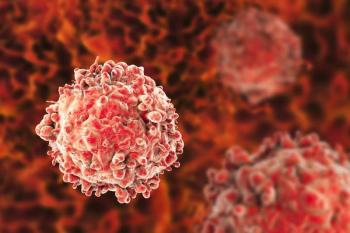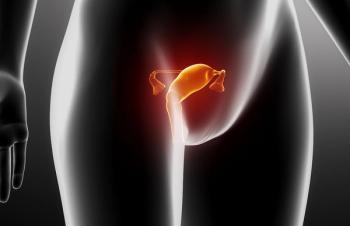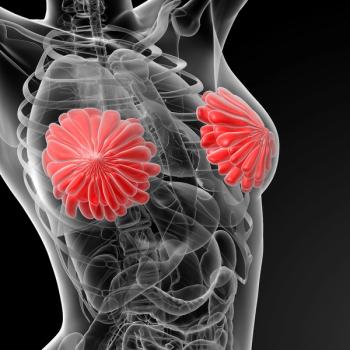
Iptacopan Yields Meaningful Hemoglobin Improvements in Pretreated PNH Group
Data from APPULSE-PNH may support oral iptacopan as a potentially practice-changing option in patients with paroxysmal nocturnal hemoglobinuria.
Treatment with iptacopan (Fabhalta) produced meaningful hemoglobin (Hb) improvements and sustained transfusion independence among patients with paroxysmal nocturnal hemoglobinuria (PNH) who switched from prior anti-C5 therapies, according to a presentation on findings from the phase 3b APPULSE-PNH trial (NCT05630001) presented at the
Data showed rapid normalization of mean Hb levels following treatment with iptacopan monotherapy. The mean Hb level at week 24 was 13.88 g/dL (SD, 1.27). The adjusted mean change in Hb from baseline to days 126 to 168 after treatment initiation was +2.01 g/dL (95% CI, 1.74-2.29), showing that the study treatment was noninferior (P < .0001) and superior (P < .0001) after patients switched from anti-C5 therapy.
At baseline, 38.5% (n = 20 of 52) of the study population had an Hb level of 12 g/dL or higher in the absence of red blood cell (RBC) transfusions 6 months prior to screening. Between days 126 and 168 after starting treatment in the absence of RBC transfusions from days 1 to 168, 92.7% (95% CI, 84.6%-98.1%) of evaluable patients had an Hb level of 12 g/dL or higher. Additionally, all patients (100%; 95% CI, 93.1%-100.0%) avoided RBC transfusion between days 1 and 168.
The mean lactate dehydrogenase (LDH) remained below the upper limit of normal (ULN) throughout the study, with no patients experiencing clinical breakthrough hemolysis. From days 126 to 168 after treatment initiation, the adjusted mean percentage change in LDH from baseline was –1.30% (95% CI, –6.56% to 4.26%) and the geometric adjusted mean ratio increased by 0.99 (95% CI, 0.93-1.04) relative to baseline.
The mean absolute reticulocyte count (ARC) saw a rapid decrease within the normal range and was sustained across the study period. Between days 126 and 168 after treatment initiation, the adjusted mean change in ARC from baseline was –89.19 x 109/L (95% CI, –95.37 to –82.92) and the mean ARC at week 24 was 60.40 x 109/L (SD, 22.36).
“Results from APPULSE-PNH and previous trials establish oral iptacopan monotherapy as a potentially practice-changing treatment capable of inducing improvements in Hb to normal or near normal levels by providing comprehensive hemolysis control,” study author Austin Kulasekararaj, MBBS, MD, MRCP, FRCPath, a consultant hematologist at King’s College Hospital in London, United Kingdom, stated in the presentation.1
In the multicenter, open-label, single-arm APPULSE-PNH trial, 52 patients were assigned to receive oral iptacopan at 200 mg twice daily for 24 weeks after 6 or more months of prior treatment with eculizumab (Soliris) or ravulizumab-cwvz (Ultomiris).2
The trial’s primary end point was the adjusted mean change from baseline in Hb using the mean of 4 visits between days 126 and 168. The primary objective was determining the noninferiority of iptacopan after switching from anti-C5 therapy if the lower bound of the 95% CI was higher than –1 g/dL. A key secondary objective was the superiority of iptacopan following prior anti-C5 treatment if the lower bound of the 95% CI exceeded 0 g/dL.
Patients 18 years or older with PNH, a mean Hb of 10 g/dL or higher for at least 6 months, and no RBC transfusions for at least 6 months were eligible for study entry. An ARC exceeding 100 x 109/L, platelet count exceeding 30 x 109/L, and neutrophil count higher than 0.5 x 109/L were additional requirements for enrollment.
The mean patient age was 46.0 years, 38.5% of patients were women, and 67.3% were White. Most of the population had prior treatment with ravulizumab (88.5%), and 38.5% had an Hb level of 12 g/dL or higher at study entry.
Additional data showed a mean FACIT-Fatigue score of 38.9 at baseline, 43.9 at week 12, and 43.1 at week 24. The adjusted mean change in FACIT-Fatigue score at day 168 vs baseline was +4.29 (95% CI, 1.74-6.85). From baseline to week 24, mean Treatment Satisfaction Questionnaire for Medication-9 score changes during the study were +12.54 (95% CI, 5.58-19.49) for effectiveness, +23.86 (95% CI, 17.62-30.10) for convenience, and +18.53 (95% CI, 12.87-24.19) for global satisfaction.
The mean total PNH RBC clone size at week 24 was 73.9% (SD, 20.4), and the mean change from baseline to day 168 for this outcome was +22.2% (SD, 16.2). Additionally, the mean CD3-positive PNH RBC concentration was 0.2% (SD, 0.7) at week 24 and the mean change from baseline to day 168 was –11.6% (SD, 9.3).
Any treatment-emergent adverse effects (TEAEs) affected 84.6% of patients, with mild, moderate, and severe TEAEs reported in 51.9%, 28.8%, and 3.8%, respectively. The most common TEAEs included headaches (17.3%), diarrhea (11.5%), nasopharyngitis (11.5%), and nausea (11.5%). There were no serious TEAEs related to iptacopan, and no treatment-related deaths occurred.
No major adverse vascular events occurred, and 42.3% of patients experienced TEAEs related to the infections and infestations system organ class. One patient discontinued therapy on day 104 following a nonserious TEAE consisting of palpitations; this event was suspected to be associated with iptacopan.
References
- Kulasekararaj A, Sicre de Frontbrune F, Gaya A, et al. APPULSE-PNH: oral iptacopan monotherapy demonstrates clinically meaningfully hemoglobin increases in patients with paroxysmal nocturnal hemoglobinuria and hemoglobin ≥ 10 g/dL on anti-C5 therapy. Abstract presented at: European Hematology Association 2025 Congress; June 12-15, 2025; Milan, Italy. Abstract S183.
- Single arm, open label trial with iptacopan treatment for 24 weeks, in patients on stable regimen of anti-C5 who switch to iptacopan. (APPULSE). ClinicalTrials.gov. Updated November 25, 2024. Accessed June 13, 2025. https://tinyurl.com/reh5jc3y
Newsletter
Stay up to date on recent advances in the multidisciplinary approach to cancer.
































































































